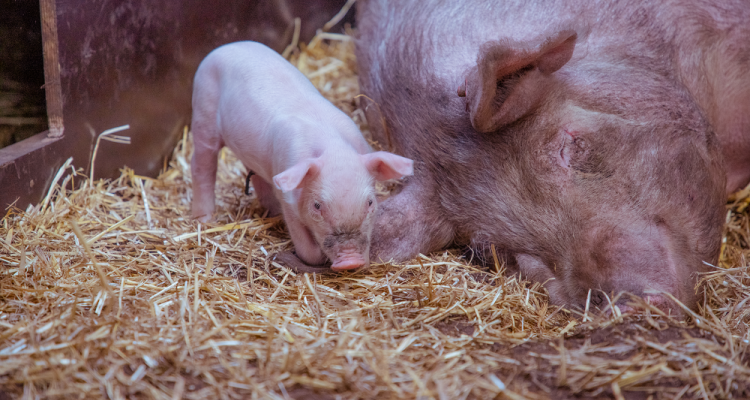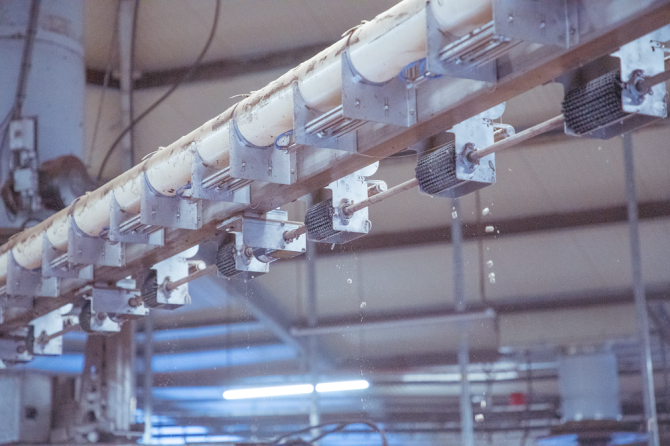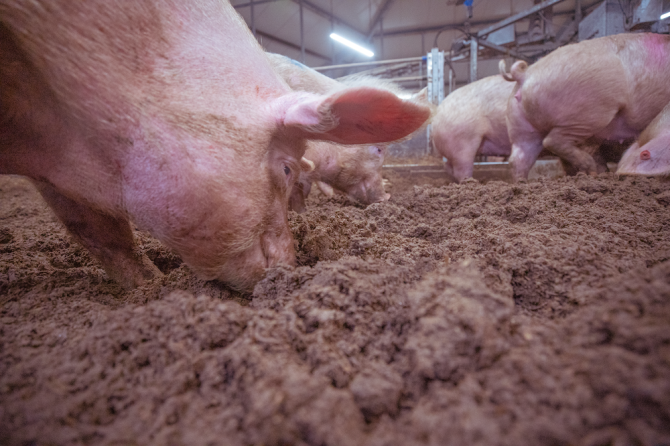
Showcase
Innovative barn ‘The Family Pig’ makes for a happy pig
A new pig in the group or boredom can cause pigs a lot of stress. They can even become aggressive and bite other pigs in the tail. A new type of housing system called ‘The Family Pig’ could provide a solution.
“Reducing emissions of ammonia and more attention for animal welfare are both issues the livestock sector is currently struggling with,” says behavioural scientist Liesbeth Bolhuis. “Entrepreneurs of the company Big Developments started a living lab in Venhorst, Brabant in 2019 to offer pig farmers a better future. They have developed an innovative housing system, with a design that takes the natural behaviour of the animals into account. Our Adaptation Physiology chair group is studying the behaviour and welfare of the pigs in this ‘Family Pig Farm'.”
The life of the Family Pig
The round, flower-shaped barn is approximately 1000 m2 large. The pigs are observed and monitored using cameras and a tracking system, so the researchers know exactly what the pigs are doing and where they are. “The Family Pig lives in a family group on a bed of sand,” explains behavioural scientist Inonge Reimert. “They cuddle up against each other while resting and clearly enjoy eating together. Their food ‘rains’ down from a swinging arm suspended from the ceiling of the barn.The pigs love rooting around for the pellets in the sand. Meanwhile, other pigs will be digging a hollow to lie in or taking a nap.”

Nursery pens
The nursery pens are in the outer rim (the ‘flower petals’) of the barn. In each pen, four sows make their own nest of straw. The sows can visit each other from time to time because the pens are open. “The piglets can root in the sand with their mothers soon after birth,” says Bolhuis. “This gradually gets them used to eating the pig pellets and they can also get to know the other piglets and sows and play to their heart’s content. This improves their social skills and makes them less likely to bite each other. After five weeks, the sows return to the central area of the barn. The piglets stay together in the same pen from their birth until it is time for slaughter. They become accustomed to all the smells and sounds and never have to undergo a stressful relocation or change of group.”

Pig toilet
The pigs are supposed to learn to urinate and defecate on a real pig toilet. An ideal toilet will drain and separate the manure and urine directly. “The separation of manure and urine prevents emissions of ammonia, a gas that is unpleasant to breath both for the pigs and the farmer,” says Reimert. “Ammonia is created when the nitrogenous substances in the urine are broken down by an enzyme in the faeces.”
The toilet training is quite a journey of discovery for the researchers. Some of the pigs do not use the toilet and instead seek out a corner of the barn in the sand, for example because they have to pass too many other pigs to get to the toilet. “We are trying to encourage the pigs to use the toilet, for example by placing drinking water nearby and observing whether that has an effect,” says Reimert. “That’s what makes this project so unique,” adds Bolhuis. “We can adapt the system to the animal instead of making the animal adapt to the system. We are doing this together with a team of veterinarians, industry experts, the farmer and the initiators of the Big Developments project.”
More positive behaviour
The Family Pig shows that it is possible to house pigs differently, in a stress-free environment and together with family. “We are seeing a relatively large amount of positive behaviour, with very few bite incidents,” says Reimert. “The sows and piglets enjoy exploring their surroundings and, most importantly, there is peace and harmony in the barn. We therefore expect the pigs to be less susceptible to disease and that they will need few or no antibiotics.” “Farmers could also apply some of the concepts from the barn, such as feeding the sows and piglets together, to other housing systems,” concludes Bolhuis.